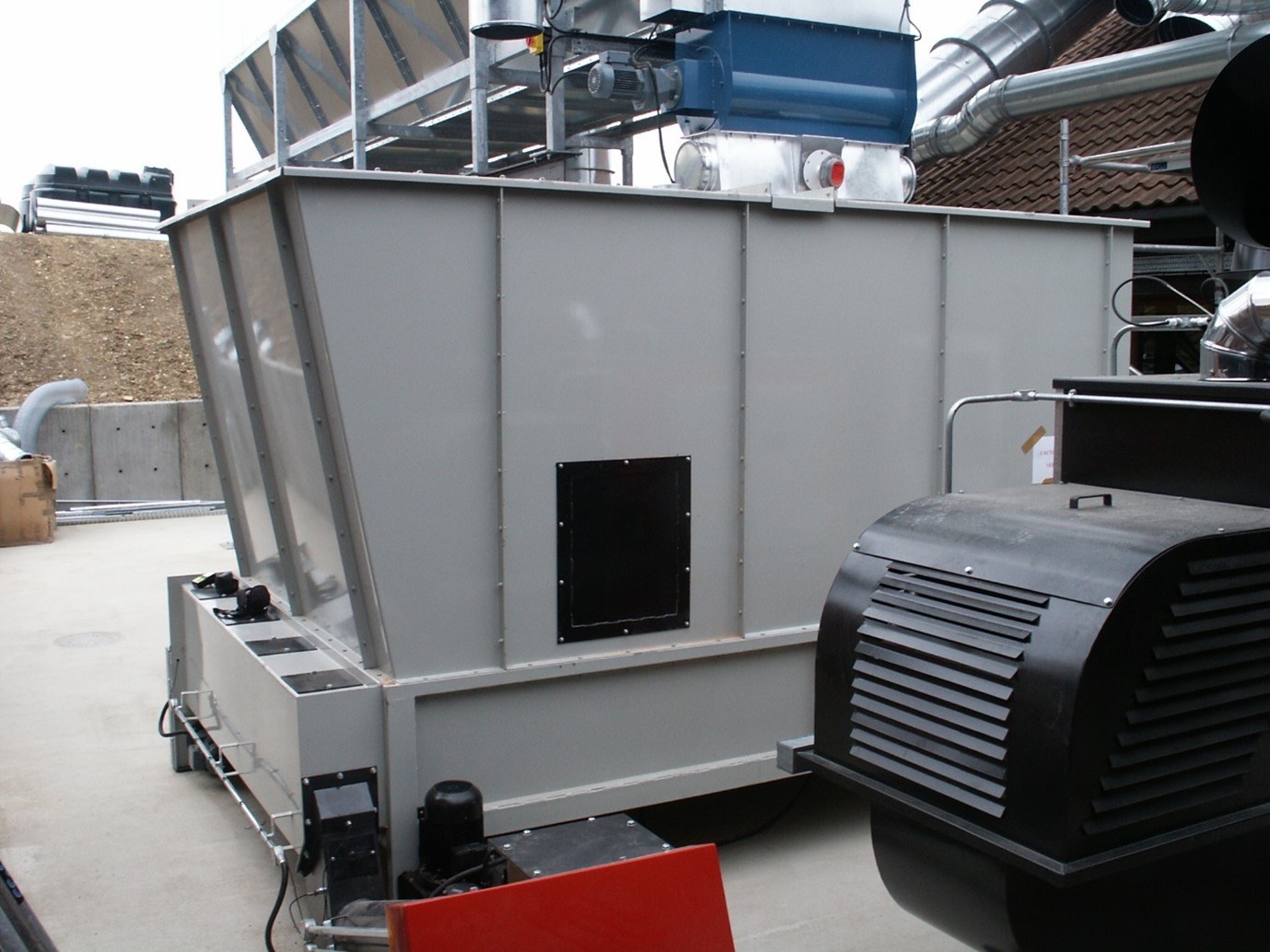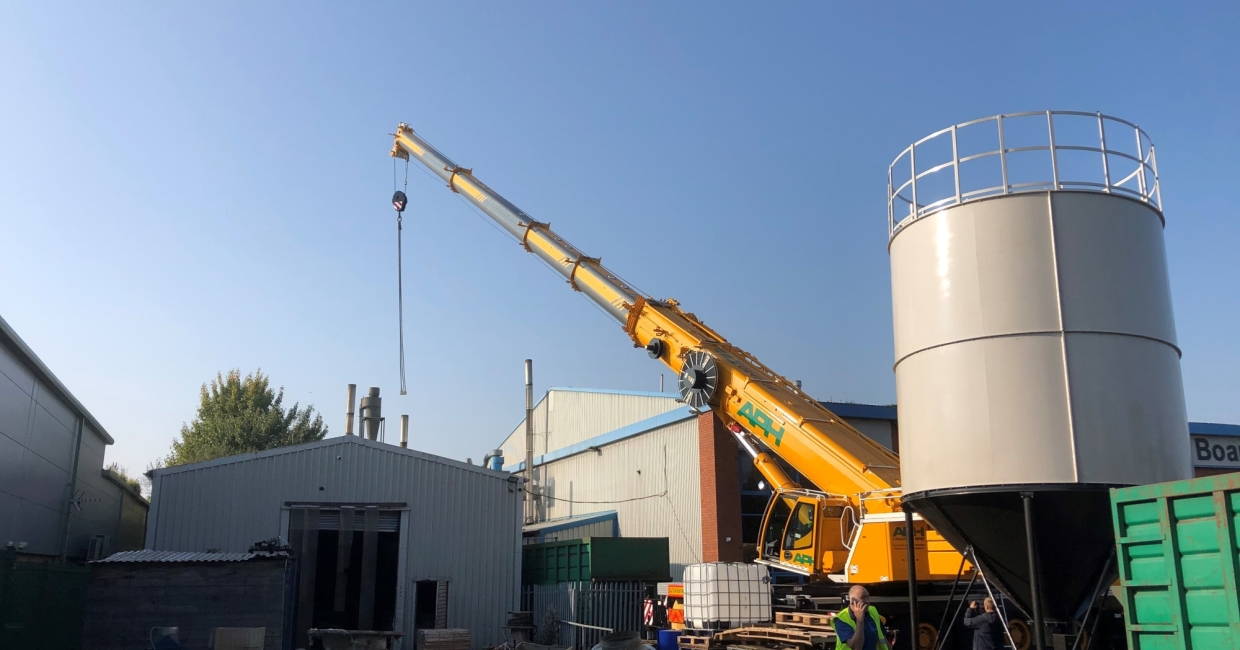Chris Franklin, Chairman at Ranheat Engineering Ltd, a leading UK manufacturer of wood combustion equipment, continues his series of articles exclusively for Furniture and Joinery Production. This month, he writes about storage silos for industrial wood waste.
There is a lot of nonsense around the design of storage silos for wood-waste as to whether a flat bottom silo is better or worse that a conical bottom silo.
As a leading manufacturer of industrial silos here at Ranheat, we make both flat bottom and conical bottom silos. The design of a silo is really simple, normally they are a cylinder. The important part is not the silo but the outfeeder mechanism, how the wood-waste is taken from the silo.
Wood waste is not free-flowing like grain, which is why grain silos are not and have never been suitable for wood waste. So, the most important design consideration for the silo is that it must be smooth-faced with no ledges that wood waste can get hung up on.
I have even seen some manufacturers make a square silo, flat-bottomed, with a round out-feed mechanism so the corners could never be emptied! They sill claimed that the silo had a given capacity based on its actual volume, not on how much you could put in and how much you could take out.
The next consideration is the mix of wood waste that the silo gets from the factory during the working week. Inevitably, this is not uniform as it depends on what is going through the factory at any one time.
The most difficult is a general joinery shop, what machines are running, and also the type and even the species of wood being processed. One minute it could be soft fluffy softwood shavings with a low bulk density from a moulder, the next it could be MDF fine dust from a CNC router with a high bulk density.
Add in a woodchipper with chips that could be from hardwood softwood or man-made boards, and you will have a wide variety of bulk densities per unit of volume.
Add to this that when the factory stops working the dust extraction filter cleans (unless you have one with continuous cleaning) then on the cleaning cycle literally tonnes of fine dust will come through the transfer system and into the top of the silo so you will end up with layers all at different bulk densities.
In these circumstances, a conical bottom silo is the best solution as the agitator arm rides up on the wood waste and so takes a sample of material from all of the layers. Often as deep as 4m, this gives a much more uniform feed than a flat bottom silo, which works on a layer at a time and is not able to vary based on weight.
The calorific value (or how much energy you get per kilo) is dependent on weight and not volume. So, the best way would be to weigh the fuel as it comes out, but this is not a practical method to use. So, most systems work on volume.
Not all silos are feeding a wood combustion system, which needs an even feed, so to get an even feed to a wood-fired system you need dosing control and a variable speed stoker. Here at Ranheat, we use invertors PLC controlled to constantly vary the feed rate into a combustion system. The speed selected is based on the water or air-off temperature, the flue gas temperature, the ambient temperature and the oxygen content in the flue gasses. This is the ONLY way to correctly control a wood-fired system and meet the strict emission regulations.
Sometimes, due to space restrictions, a large round silo is not possible, so Ranheat make a range of flat-bottom silos using different outfeeder mechanisms. These are often installed directly under the dust extraction system and replace a skip.
Here at Ranheat, we believe that “not one design fits all”, so like our combustion systems we offer a wide range of mechanisms to deliver wood waste out of a silo. Also wood waste is not self-levelling like water. On a centrally loaded silo with a 4m diameter, you will always get a peak in the silo, full in the centre, empty at the circumference. With a conical bottom silo, what you lose at the top you gain in the cone so don’t be fooled by claims that a silo holds a given volume with a flat bottom silo, you will never be able to fill it from a central loading point, Buyer beware!!
Another advantage of a conical bottom is that the motor and gearbox can be accessed from the outside, so no need to empty the silo for maintenance.
For further information on all types and sizes of Industrial Woodburning equipment from 75 kW upwards contact Ranheat on 01604 750005 [email protected] www.ranheat.com
Ranheat also make spares and service and repair other makes of woodburning boilers and heaters.









